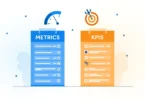Success in business isn’t just about making money—it’s about sustained growth, stability, and impact. But how do you measure success beyond just revenue? This is where Business Success Indicators come into play. These key metrics help business owners and entrepreneurs assess performance, profitability, customer satisfaction, and operational efficiency.
Tracking the right indicators ensures that a company stays competitive, adaptable, and profitable in an ever-changing market. Whether it’s financial health, employee productivity, or customer retention, these metrics provide data-driven insights that guide decision-making and long-term strategy.
In this article, we’ll break down the most essential Business Success Indicators, explaining how they define a thriving company and how you can use them to drive growth and sustainability. Let’s dive in!
Headlines
What Are Business Success Indicators and Why Do They Matter?
- Understanding Business Success Indicators
- The Role of Business Success Indicators in Long-Term Growth
Essential Financial and Operational Business Success Indicators
- Revenue, Profitability, and Cash Flow Metrics
- Operational Efficiency and Employee Productivity Indicators
Customer and Market Business Success Indicators
- Customer Retention Rate and Brand Reputation Metrics
- Market Trends, Competitive Benchmarking, and Industry Growth
What Are Business Success Indicators and Why Do They Matter?
Understanding Business Success Indicators
In the fast-paced world of business, success isn’t just about having a great product or service—it’s about measuring progress, optimizing performance, and making informed decisions. Business Success Indicators serve as the foundation for tracking a company’s health, ensuring it stays on the path to growth and sustainability.
What Are Business Success Indicators?
Business Success Indicators are measurable metrics that reflect how well a company is performing in key areas such as financial health, operational efficiency, customer satisfaction, and market positioning. These indicators help businesses assess whether they are moving toward their goals or need to adjust their strategies.
Some of the most common Business Success Indicators include:
- Revenue and Profitability Metrics: Gross Profit Margin, Net Profit Margin, and Return on Investment (ROI).
- Customer-Related Metrics: Customer Retention Rate, Customer Lifetime Value (CLV), and Net Promoter Score (NPS).
- Operational Metrics: Employee Engagement Score, Productivity Levels, and Workflow Efficiency.
- Market and Competitive Metrics: Market Share Analysis, Industry Growth Trends, and Brand Reputation.
Each of these indicators provides valuable insights that guide business owners, executives, and investors in making strategic decisions that lead to long-term success.
Why Are Business Success Indicators Important?
Without proper measurement, businesses operate in the dark. Success indicators offer clarity by helping companies:
Identify Strengths and Weaknesses – Pinpoint areas where the business is excelling and where improvements are needed.
Track Progress Over Time – Compare current performance against past data to measure growth.
Make Data-Driven Decisions – Base business strategies on facts rather than assumptions.
Stay Competitive in the Market – Monitor industry trends and adjust accordingly.
Enhance Customer Satisfaction – Understand what drives customer loyalty and improve services accordingly.
By consistently tracking these Business Success Indicators, companies can predict potential risks, seize new opportunities, and maintain a competitive edge in their industry.
This expanded section sets the stage for the rest of your blog post, reinforcing the importance of Business Success Indicators while engaging the reader with real-world applications. Let me know if you’d like further refinements!
The Role of Business Success Indicators in Long-Term Growth
Sustaining success in business isn’t just about hitting short-term targets—it’s about building a foundation for continuous growth and stability. This is where Business Success Indicators play a crucial role. These metrics provide the insights companies need to make strategic decisions, improve efficiency, and stay ahead of the competition.
How Business Success Indicators Drive Long-Term Growth
Tracking the right Business Success Indicators helps businesses in several key ways:
Enhancing Financial Stability
- Businesses that monitor key financial indicators like Net Profit Margin, Cash Flow, and Return on Investment (ROI) can make informed financial decisions.
- Proper financial tracking ensures that resources are allocated efficiently, reducing risks of cash shortages or overspending.
- Companies that maintain healthy financial indicators are more likely to attract investors and secure funding for future expansion.
Improving Operational Efficiency
- Monitoring Employee Engagement Scores, Productivity Metrics, and Workflow Efficiency helps businesses optimize internal processes.
- A highly productive workforce leads to better output, lower costs, and higher profit margins.
- Businesses that track operational success indicators can eliminate inefficiencies and improve overall performance over time.
Strengthening Customer Loyalty and Market Position
- Metrics like Customer Retention Rate, Net Promoter Score (NPS), and Brand Reputation are crucial for building long-term customer relationships.
- A business with strong customer retention and satisfaction levels experiences steady revenue growth and reduces the cost of acquiring new customers.
- A positive brand reputation leads to increased trust, word-of-mouth marketing, and a competitive advantage in the industry.
Adapting to Market Trends and Staying Competitive
- Tracking Market Share Analysis, Industry Growth Trends, and Competitive Benchmarking ensures businesses stay relevant in their sector.
- Businesses that proactively adapt to changing trends stay ahead of competitors and are better prepared for economic shifts.
- Understanding competitor strategies through success indicators helps businesses identify gaps in the market and capitalize on new opportunities.
Why Long-Term Growth Depends on Data-Driven Decision-Making
Companies that regularly analyze their Business Success Indicators are in a better position to make data-driven decisions rather than relying on assumptions or guesswork. This approach leads to:
- More effective strategic planning based on actual performance data.
- Reduced risks by identifying potential problems early.
- Sustainable growth through continuous improvements in financial, operational, and customer-related aspects.
Ultimately, Business Success Indicators act as a roadmap that guides businesses toward long-term stability, profitability, and expansion. Companies that track and optimize these metrics gain a competitive edge and ensure their continued success in an ever-evolving marketplace.
This expanded section reinforces the importance of Business Success Indicators in long-term growth with practical insights and real-world applications. Let me know if you’d like further refinements!
Essential Financial and Operational Business Success Indicators
Revenue, Profitability, and Cash Flow Metrics
Financial health is the backbone of any successful business. Without strong revenue streams, sustainable profitability, and healthy cash flow, even the most innovative companies can struggle to survive. That’s why tracking key financial Business Success Indicators is essential for long-term growth and stability.
Let’s dive deeper into the three most critical financial metrics every business should monitor:
1. Revenue: The Lifeblood of a Business
Revenue, also known as sales or top-line income, is the total amount of money a business generates from selling its products or services before any expenses are deducted. It’s one of the most fundamental Business Success Indicators because it reflects the company’s ability to attract customers and generate demand.
Why Revenue Matters for Business Success
Indicates Market Demand: A growing revenue stream suggests that customers value the product or service.
Drives Business Expansion: Higher revenue allows companies to reinvest in growth, marketing, and innovation.
Attracts Investors: Investors and stakeholders evaluate revenue trends to determine a company’s financial stability and future potential.
Key Revenue Metrics to Track
- Total Revenue: The overall income before expenses.
- Revenue Growth Rate: The percentage increase in revenue over a specific period, indicating business expansion.
- Recurring Revenue: Especially important for subscription-based businesses, showing stability in income.
How to Improve Revenue
- Increase marketing efforts to attract more customers.
- Optimize pricing strategies to maximize sales without losing customers.
- Expand into new markets or launch additional products/services.
2. Profitability: Measuring Business Efficiency
Revenue alone isn’t enough—profitability determines how much money a business actually keeps after covering its expenses. A company can have high revenue but still struggle if costs are too high.
Why Profitability is a Key Business Success Indicator
Ensures Long-Term Sustainability: Without profit, businesses cannot survive in the long run.
Measures Efficiency: Helps determine whether a company is effectively managing its resources.
Influences Business Valuation: Investors assess profit margins to gauge financial health and investment potential.
Key Profitability Metrics to Track
- Gross Profit Margin: Measures the percentage of revenue remaining after deducting the cost of goods sold (COGS). Formula:
(Revenue – COGS) ÷ Revenue × 100 - Net Profit Margin: Shows the percentage of revenue left after all operating expenses, taxes, and interest are deducted. Formula:
(Net Profit ÷ Revenue) × 100 - Return on Investment (ROI): Measures how much profit a company generates from its investments.
How to Improve Profitability
- Reduce unnecessary operational costs to increase margins.
- Optimize pricing strategies to maximize per-sale profit.
- Improve productivity and efficiency in operations to reduce waste and expenses.
3. Cash Flow: The Lifeline of Financial Health
Even if a business is profitable on paper, it can fail due to poor cash flow management. Cash flow refers to the movement of money in and out of a business. A positive cash flow means the company has more money coming in than going out, ensuring it can meet expenses and invest in growth.
Why Cash Flow is Crucial for Business Success
Ensures Daily Operations: Businesses need cash to pay employees, suppliers, and bills.
Prevents Financial Struggles: A lack of cash can lead to missed payments and potential bankruptcy.
Supports Growth Initiatives: Positive cash flow allows companies to expand and invest in new opportunities.
Key Cash Flow Metrics to Track
- Operating Cash Flow (OCF): The cash generated from core business activities.
- Cash Flow to Debt Ratio: Measures a company’s ability to repay its debts using available cash.
- Free Cash Flow (FCF): The cash remaining after operating expenses and capital expenditures, which can be reinvested into the business.
How to Improve Cash Flow
- Shorten the time customers take to pay invoices to increase incoming cash.
- Reduce unnecessary expenses to minimize outgoing cash.
- Maintain an emergency cash reserve to handle unexpected financial challenges.
Final Thoughts: Why These Financial Metrics Matter
Revenue, profitability, and cash flow metrics are three of the most critical Business Success Indicators. Together, they provide a clear picture of a company’s financial health and growth potential.
📊 Revenue shows how much money a business is making.
📈 Profitability determines how efficiently a business operates.
💰 Cash Flow ensures the business can sustain operations and grow.
By regularly tracking and optimizing these financial indicators, businesses can increase stability, make informed decisions, and achieve long-term success in a competitive market.
This expanded section provides in-depth explanations, actionable insights, and real-world applications of Revenue, Profitability, and Cash Flow Metrics as Business Success Indicators. Let me know if you’d like further refinements!
Operational Efficiency and Employee Productivity Indicators
For businesses to thrive in today’s competitive environment, operational efficiency and employee productivity are critical factors that determine how well resources are utilized to achieve business goals. These indicators help assess how effectively a company’s operations run, and how its workforce contributes to overall success. When optimized, they lead to increased profitability, reduced waste, and enhanced business performance.
1. Operational Efficiency: Streamlining Processes for Success
Operational efficiency refers to the ability of a business to deliver its products or services in the most cost-effective manner while maintaining high quality. By tracking operational efficiency indicators, businesses can identify areas where processes can be optimized, costs can be reduced, and productivity can be enhanced.
Why Operational Efficiency is Important
- Cost Reduction: Streamlining operations leads to lower operational costs, allowing companies to achieve higher profit margins.
- Quality Improvement: Efficient processes reduce errors and inconsistencies, ensuring better product and service quality.
- Faster Time to Market: Optimized operations enable quicker product development cycles and faster delivery to customers.
- Sustainability: Efficient operations often lead to better resource management, reducing waste and contributing to long-term sustainability.
Key Operational Efficiency Metrics to Track
- Cycle Time: Measures the amount of time it takes to complete a task or produce a product, from start to finish. Reducing cycle time can lead to faster production and delivery.
- Inventory Turnover: Indicates how often inventory is sold and replaced over a period. A high turnover rate suggests efficient inventory management.
- Cost per Unit: Helps businesses assess the cost efficiency of producing a single unit of a product or service. Lowering cost per unit while maintaining quality is a key goal of operational efficiency.
- Process Defects or Errors: Measures how often errors occur in business processes. A low defect rate indicates well-designed and efficient processes.
How to Improve Operational Efficiency
- Automate Routine Tasks: Implement automation tools to reduce manual labor, minimize errors, and increase speed in operations.
- Implement Lean Principles: Streamline workflows by removing unnecessary steps and focusing on value-added activities.
- Regularly Review Processes: Constantly assess existing workflows to identify bottlenecks or inefficiencies and improve them.
- Invest in Technology: Using modern software and tools can significantly enhance communication, reduce time spent on administrative tasks, and help track performance.
2. Employee Productivity: Maximizing Human Capital
Employee productivity is a key indicator of how efficiently a business utilizes its workforce to achieve its objectives. It’s about getting the most out of each team member’s skills, time, and effort. High productivity directly contributes to increased output, better quality of work, and improved financial performance.
Why Employee Productivity Matters
- Increased Output: High employee productivity leads to more work completed in less time, contributing to overall business performance.
- Better Profit Margins: Efficient employees reduce labor costs while maintaining or increasing output, leading to better profitability.
- Improved Employee Satisfaction: A productive work environment often correlates with higher employee satisfaction and engagement, reducing turnover rates.
- Sustainability: Highly productive employees contribute to the long-term sustainability of a business by continuously improving performance and output.
Key Employee Productivity Metrics to Track
- Revenue per Employee: Measures the total revenue generated by the company divided by the number of employees. A higher ratio typically indicates better productivity and efficient resource allocation.
- Employee Engagement Score: Reflects how committed and motivated employees are. Engaged employees tend to be more productive, satisfied, and willing to go above and beyond in their roles.
- Output per Hour Worked: This metric measures how much work is completed per hour of employee labor. It helps businesses identify whether employees are spending their time efficiently or wasting resources.
- Absenteeism Rate: Tracks the frequency of employee absenteeism. High absenteeism often signals low engagement or issues within the workplace that impact productivity.
- Employee Turnover Rate: A high turnover rate can be a sign of low productivity, poor morale, or inadequate job satisfaction, all of which impact overall business performance.
How to Improve Employee Productivity
- Offer Training and Development: Equip employees with the necessary skills and knowledge to excel in their roles and increase their efficiency.
- Set Clear Goals: Establishing clear, measurable goals helps employees understand expectations and stay focused on achieving them.
- Foster a Positive Work Environment: Ensure employees have the tools, resources, and support they need to be productive, and create a culture of collaboration and mutual respect.
- Implement Performance Incentives: Rewarding high performance with bonuses, promotions, or other incentives motivates employees to improve their productivity.
- Encourage Work-Life Balance: Overworking employees can lead to burnout and decreased productivity. A balance between work and personal time ensures that employees remain engaged and energized.
The Connection Between Operational Efficiency and Employee Productivity
Both operational efficiency and employee productivity are intertwined. An efficient operation provides employees with the tools, processes, and environment they need to be productive. On the other hand, highly productive employees contribute to optimizing operations. Together, these indicators ensure that a business operates smoothly, maximizes its output, and meets its goals effectively.
By regularly monitoring and optimizing these Operational Efficiency and Employee Productivity Indicators, businesses can improve their day-to-day operations, enhance the quality of their products and services, and ultimately drive sustained success. Tracking these metrics allows companies to identify areas for improvement, implement corrective actions, and keep their operations running at peak performance.
Customer and Market Business Success Indicators
Customer Retention Rate and Brand Reputation Metrics
Maintaining a loyal customer base and building a strong brand reputation are essential for long-term business success. Customer retention rate reflects how well a company keeps its customers over time, while brand reputation represents how the public perceives a business. These two business success indicators are interconnected—satisfied customers who continue to engage with a brand contribute to a positive reputation, while a strong reputation helps attract and retain customers. Businesses that prioritize these metrics can enhance customer loyalty, reduce churn, and establish themselves as trusted industry leaders.
1. Customer Retention Rate: Measuring Customer Loyalty
Customer retention rate (CRR) measures the percentage of customers who continue to do business with a company over a given period. A high retention rate indicates strong customer satisfaction and brand loyalty, while a low rate may signal problems with service, product quality, or customer experience.
Why Customer Retention Matters
- Higher Profitability: Retaining existing customers is often more cost-effective than acquiring new ones. Loyal customers tend to make repeat purchases, increasing overall revenue.
- Stronger Customer Relationships: Businesses that focus on retention build lasting relationships, which can lead to increased trust and advocacy.
- Reduced Marketing Costs: Companies with high retention rates spend less on customer acquisition, as existing customers continue to engage with their brand.
- Competitive Advantage: Businesses that retain customers effectively can build a strong, stable customer base, making them more resilient to market fluctuations.
Key Metrics for Customer Retention
- Customer Retention Rate (CRR): Measures the percentage of customers retained over a specific period.
- Customer Churn Rate: Indicates the percentage of customers lost over time, helping businesses identify areas for improvement.
- Repeat Purchase Rate: Tracks how often customers return to buy again, reflecting brand loyalty.
- Customer Lifetime Value (CLV): Estimates the total revenue a business can expect from a single customer throughout their relationship with the company.
Strategies to Improve Customer Retention
- Enhance Customer Experience: Providing exceptional service, personalized interactions, and seamless support increases customer satisfaction.
- Loyalty Programs and Rewards: Offering incentives such as discounts, exclusive offers, or membership programs encourages repeat business.
- Consistent Communication: Engaging customers through email marketing, follow-ups, and personalized messages helps maintain relationships.
- Address Customer Feedback: Actively listening to customer concerns and making improvements based on their feedback fosters loyalty.
2. Brand Reputation Metrics: Building Trust and Credibility
Brand reputation is a key business success indicator that determines how customers, stakeholders, and the public perceive a company. A positive reputation strengthens brand credibility, fosters customer trust, and enhances overall business performance.
Why Brand Reputation is Important
- Increased Customer Trust: Customers are more likely to engage with brands that have a strong and trustworthy reputation.
- Higher Customer Retention: A positive brand image encourages long-term loyalty and repeat business.
- Competitive Edge: Businesses with strong reputations stand out in the market, attracting more customers and potential partnerships.
- Crisis Resilience: Companies with positive reputations are better equipped to handle setbacks, as loyal customers and stakeholders provide continued support.
Key Metrics for Measuring Brand Reputation
- Net Promoter Score (NPS): Measures customer willingness to recommend a business, indicating overall brand perception.
- Online Reviews and Ratings: Analyzes customer feedback across platforms such as Google, Yelp, and Trustpilot.
- Brand Sentiment Analysis: Assesses how customers feel about a brand based on social media mentions, surveys, and online discussions.
- Social Media Engagement: Tracks interactions such as shares, likes, and comments, reflecting audience sentiment and brand awareness.
Strategies to Strengthen Brand Reputation
- Deliver Consistent Quality: Ensuring high-quality products and services builds trust and reliability.
- Engage in Transparent Communication: Being honest about business practices, policies, and challenges fosters credibility.
- Respond to Customer Concerns: Addressing negative feedback promptly and professionally shows commitment to customer satisfaction.
- Leverage Positive Testimonials: Showcasing satisfied customer experiences helps build confidence among potential clients.
The Connection Between Customer Retention and Brand Reputation
Customer retention and brand reputation go hand in hand. A business that retains customers successfully will naturally develop a stronger reputation, as loyal customers are more likely to recommend the brand and leave positive reviews. At the same time, a well-established brand reputation encourages customer loyalty, as people are more likely to stay with brands they trust.
By tracking customer retention rate and brand reputation metrics, businesses can ensure they are providing exceptional value, fostering loyalty, and maintaining a strong presence in the marketplace. Prioritizing these success indicators leads to long-term growth, stability, and competitive strength in any industry.
Market Trends, Competitive Benchmarking, and Industry Growth
Understanding market trends, competitive benchmarking, and industry growth is vital for businesses aiming to stay competitive and achieve sustained success. These business success indicators help companies navigate the dynamic business landscape by identifying emerging opportunities, understanding competitive forces, and assessing overall market potential. By focusing on these metrics, businesses can make strategic decisions that foster long-term growth, adapt to shifts in the marketplace, and capitalize on new trends.
1. Market Trends: Adapting to the Changing Landscape
Market trends are shifts in consumer behavior, technology, regulations, and broader economic conditions that influence industries and businesses. Monitoring market trends allows businesses to identify potential threats and opportunities, enabling them to adapt and stay ahead of competitors.
Why Market Trends Matter for Business Success
- Informed Decision-Making: By staying on top of current and future trends, businesses can make informed decisions about product development, marketing strategies, and resource allocation.
- Early Adoption of Innovations: Recognizing technological or consumer behavior shifts early on gives businesses the opportunity to become leaders in new markets.
- Risk Mitigation: Understanding market fluctuations helps businesses anticipate changes that might impact profitability, allowing for proactive adjustments.
- Expansion Opportunities: Market trends often highlight growing sectors or untapped customer segments, offering businesses the chance to diversify or expand their offerings.
Key Market Trends Metrics to Track
- Consumer Sentiment: Measures how customers feel about the market, your products, or the economy. A positive sentiment may indicate increased demand, while negative sentiment may signal challenges.
- Technological Advancements: Tracking emerging technologies relevant to your business allows you to integrate new tools or adapt your processes for greater efficiency.
- Market Share Growth: Reflects how a company’s market position is evolving compared to its competitors.
- Industry Demand Fluctuations: Monitoring supply and demand within your industry provides insights into upcoming shifts, allowing you to adjust your strategies accordingly.
How to Track Market Trends
- Industry Reports and Publications: Stay updated with insights from leading industry reports, market research, and expert analyses.
- Consumer Feedback: Regularly gather feedback through surveys, focus groups, or customer reviews to stay in tune with shifting preferences.
- Competitive Analysis: Monitor competitors’ strategies and innovations to identify new trends that might affect your business.
2. Competitive Benchmarking: Understanding Your Position
Competitive benchmarking involves comparing your business’s performance with that of your direct competitors. It’s a key indicator that helps businesses understand how they stack up against others in their industry. By evaluating competitors’ strengths and weaknesses, companies can identify areas of improvement, capitalize on their strengths, and find new ways to differentiate themselves.
Why Competitive Benchmarking Matters
- Strategic Advantage: Benchmarking highlights gaps in your business processes, customer service, product offerings, or pricing strategies, which you can address to gain a competitive edge.
- Performance Assessment: By comparing your business against industry standards or top-performing competitors, you can assess whether your company is meeting expectations or needs improvement.
- Identifying Market Gaps: Competitive benchmarking can reveal areas where competitors are underperforming, providing opportunities for innovation and market differentiation.
- Setting Realistic Goals: Understanding where you stand relative to competitors allows you to set achievable, informed goals that can drive improvement and growth.
Key Competitive Benchmarking Metrics to Track
- Market Share Comparison: Assess your share of the market against competitors to see where you stand and identify opportunities for growth.
- Product or Service Quality: Compare your offerings with competitors to identify where you may need to improve quality or add unique features to stand out.
- Pricing Structure: Benchmark your pricing strategies against competitors to determine whether you are competitively priced and if there are opportunities to improve margins.
- Customer Satisfaction and Loyalty: Compare customer feedback, retention rates, and satisfaction scores to gauge how your service or product is perceived compared to your competitors.
How to Conduct Competitive Benchmarking
- Identify Key Competitors: Research competitors within your industry, focusing on direct and indirect competitors that affect your market.
- Gather Data: Collect data on your competitors’ financial performance, market share, product offerings, and customer satisfaction.
- Compare and Analyze: Use the collected data to compare your business with your competitors, identifying areas of strength and weakness.
3. Industry Growth: Assessing Long-Term Potential
Industry growth refers to the overall expansion or contraction of a specific sector or market over time. Tracking industry growth metrics helps businesses understand whether the sector they operate in is on an upward trajectory or facing challenges. This insight allows businesses to plan for the future, align their strategies with industry dynamics, and make adjustments that ensure long-term success.
Why Industry Growth is Important
- Long-Term Stability: A growing industry often means long-term opportunities for businesses to expand, innovate, and increase profitability.
- Attracting Investment: Investors are more likely to back businesses in growing industries, as there’s higher potential for returns and reduced risk.
- Expanding Market Opportunities: Growth in the industry means more consumers, larger markets, and more potential for business expansion.
- Adapting to Shifts: Understanding industry trends allows businesses to quickly adapt to changing conditions, ensuring they remain competitive.
Key Industry Growth Metrics to Track
- Market Growth Rate: The percentage increase in the size of the market over a defined period, indicating the industry’s expansion.
- Revenue Trends in the Industry: Tracks overall revenue trends within the industry to assess the general direction of financial performance.
- Emerging Sectors within the Industry: Identifies new sub-sectors or niches that are gaining traction, offering opportunities for early adoption and investment.
- Regulatory Changes: Keeping track of legal or regulatory changes that could impact industry growth helps businesses adjust their operations and compliance strategies.
How to Track Industry Growth
- Industry Reports: Regularly review industry reports from market research firms and trade organizations to gain insights into growth trends.
- Economic Indicators: Monitor macroeconomic indicators, such as GDP growth, employment rates, and consumer spending, to assess the health of the industry.
- Conferences and Webinars: Attend industry events to stay up-to-date on trends, innovations, and shifts in the market.
Conclusion: Why These Indicators Matter
Tracking market trends, competitive benchmarking, and industry growth ensures that businesses remain adaptable, competitive, and prepared for long-term success. Understanding how the market is evolving and where competitors stand gives businesses a clear direction for growth and innovation. By continuously assessing these business success indicators, companies can not only respond to changes but also seize opportunities to thrive in a constantly changing landscape.
Conclusion: The Path to Sustainable Business Growth
Tracking business success indicators is crucial for understanding how a company is performing and where improvements are needed. These metrics offer valuable insights into every aspect of a business, from financial health to customer satisfaction, operational efficiency, and market positioning. By regularly assessing these indicators, businesses can make informed decisions, capitalize on opportunities, and adapt to challenges in the marketplace.
To ensure sustainable growth, companies must not only track these metrics but also analyze them regularly. A thorough understanding of performance trends allows businesses to identify strengths to build on and weaknesses to address. By staying ahead of market shifts, adopting best practices, and focusing on continuous improvement, companies can maintain their competitive edge and grow steadily over time.
Continuous monitoring of business success indicators is essential to maintaining momentum. Business environments are ever-evolving, and staying vigilant about the metrics that matter most ensures that a company can adjust its strategies, innovate, and stay resilient in the face of changing conditions. Ultimately, businesses that prioritize and act on these indicators are better equipped for long-term success.
For more informations about Key Performance Indicators







